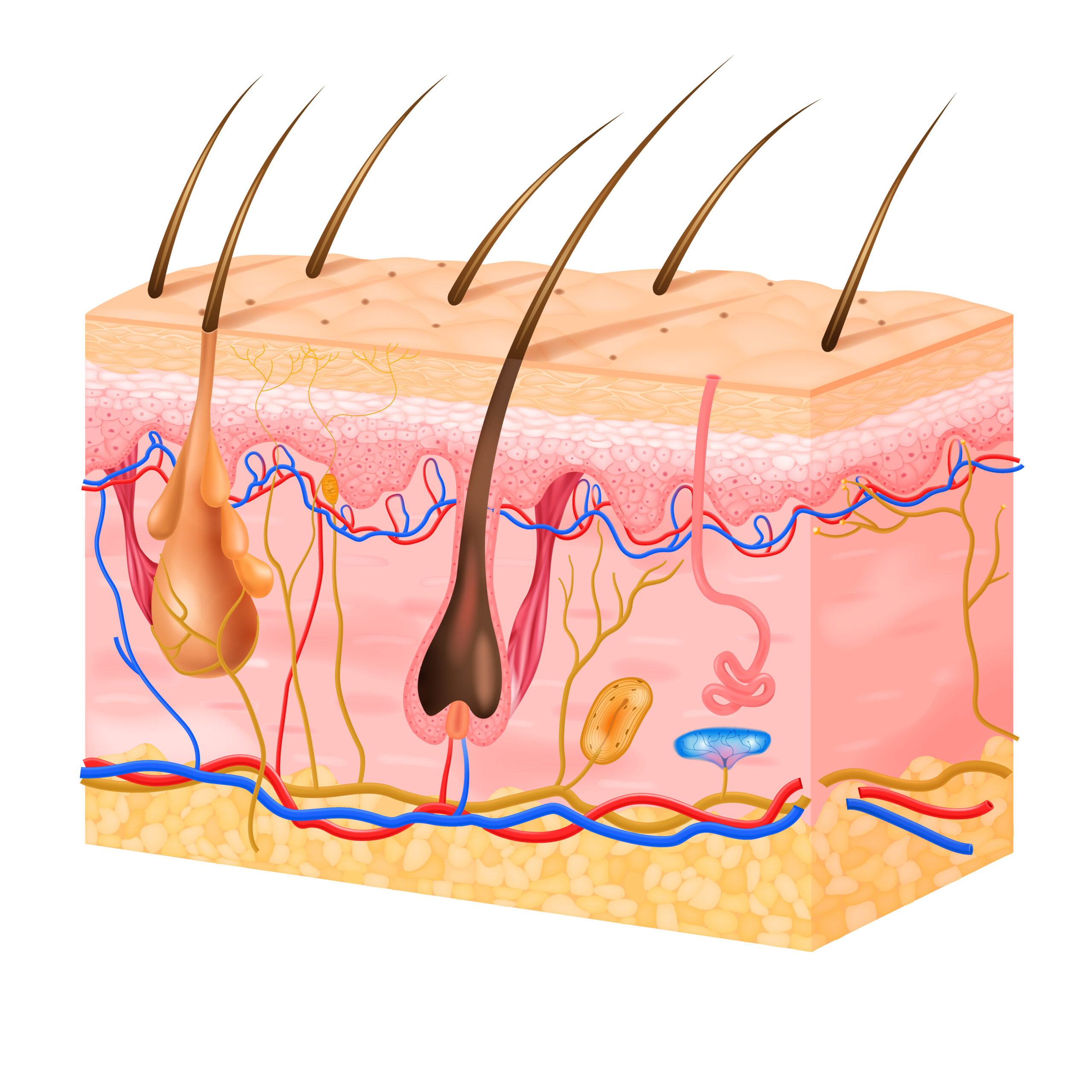For a long time, it was thought that the skin only acted as a protective barrier against the environment. However, extensive research has revealed a much more complex role: the skin is also an endocrine organ, capable of producing, releasing and responding to a wide range of hormones and neurotransmitters. This approach opens a new window on how nutrition, hormones and skin health are deeply connected.
The skin as a complete endocrine system
The skin not only reacts to hormones produced in other parts of the body; it also synthesises its own hormones. It contains local versions of the main endocrine axes: the hypothalamic-pituitary-adrenal, hypothalamic-pituitary-thyroid and others. Thanks to these, it produces compounds such as vitamin D, sex steroids, retinoids, melanocortins, opioids and many more.
Its main cells—keratinocytes, sebocytes, melanocytes, and fibroblasts—produce or respond to hormonal molecules that influence immunity, regeneration, hair growth, pigmentation, and skin ageing.
Hormone receptors in the skin: a communication network
The skin has receptors for almost all known hormones:
- Corticotropin (CRH): coordinates the response to local stress and can influence diseases such as acne or psoriasis.
- Thyroid hormones: regulate keratinocyte proliferation, sweating and hair quality. Thyroid imbalances are directly reflected in dry or oily skin.
- Sex hormones (androgens, oestrogens, progesterone): modulate sebum production, hair growth and elasticity. Their imbalance is implicated in acne, hirsutism and alopecia.
- Vitamin D: synthesised by keratinocytes after sun exposure, regulates epidermal renewal and immune function, as well as protecting against skin cancer.
- Melatonin and serotonin: form an antioxidant and anti-inflammatory system that protects the skin from ageing and UV radiation.
- Endocannabinoids: reduce inflammation and may have applications in dermatitis and psoriasis.
The skin also produces hormones
Among the main substances synthesised locally are:
- Vitamin D3, from cholesterol and UVB radiation.
- Steroids such as cortisol, androgens and oestrogens, produced in sebocytes and fibroblasts.
- Proopiomelanocortin (POMC), a precursor of melanocortins and endorphins that regulate pigmentation, immunity and skin well-being.
- Catecholamines (adrenaline and noradrenaline), which modulate blood flow and stress response.
- Growth factors such as IGF-1, essential for tissue repair and the hair cycle.
Clinical and therapeutic implications
Understanding the skin as an endocrine organ has major implications. For example:
- Melanocortin receptor agonists are being studied as a treatment for psoriasis, porphyrias and sarcoidosis.
- Topical cannabinoids could improve acne or inflammation.
- The use of topical or transdermal vitamin D is being investigated to prevent ageing and treat eye diseases.
- Prolactin or CRH antagonists could benefit patients with psoriasis or cutaneous lupus.
Conclusion: skin, hormones and nutrition, an inseparable axis
The skin not only reflects our hormonal health, but also actively participates in its regulation. This discovery redefines dermatology and opens up new perspectives for aesthetic and functional nutrition. A diet rich in natural hormone precursors (such as essential fatty acids, zinc, vitamin D, and antioxidants) can support skin endocrine function and improve its appearance, elasticity, and repair capacity.
Research on the skin as an endocrine organ is just beginning, but it is already clear that its hormonal balance—both internal and local—is key to healthy, luminous skin that resists the passage of time.
Available at: Datta D, Madke B, Das A. Skin as an endocrine organ: A narrative review. Indian J Dermatol Venereol Leprol 2022;88:590-7.




